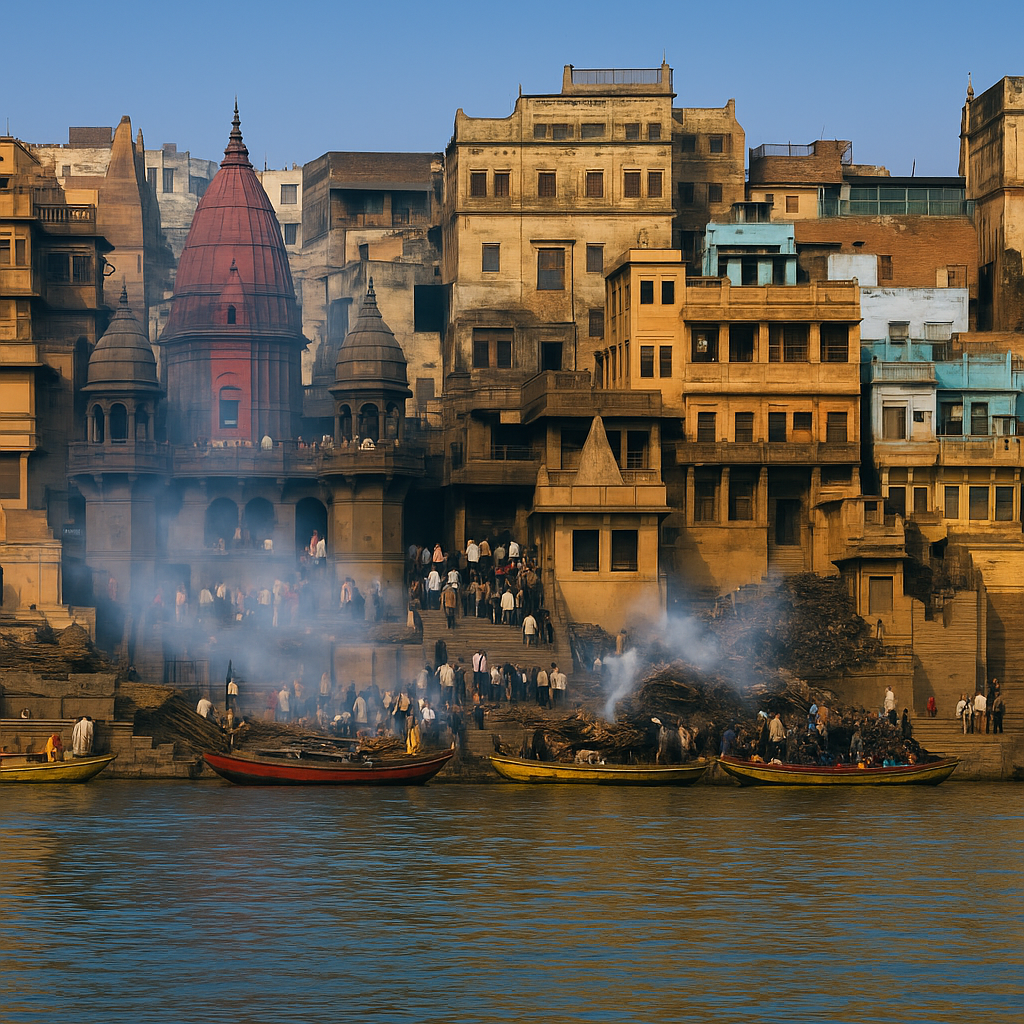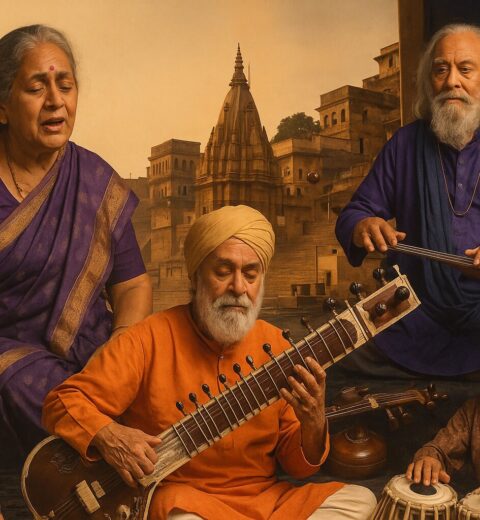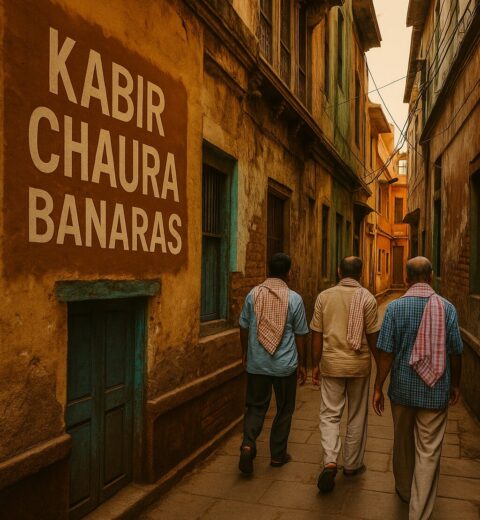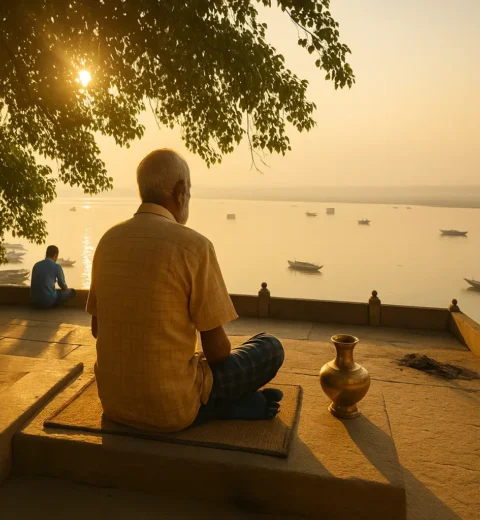There are cities that pulse with life. There are cities that whisper of ancient legends.
And then, there is Banaras — where life and death meet, embrace, and dissolve into the eternal.
As dawn breaks over the Ganges, the first rays of the sun bathe the ghats of Banaras in molten gold. The city awakens not with alarms or factory bells, but with the soft splash of pilgrims dipping into the sacred river, with the distant echo of temple bells, and the sweet scent of burning incense rising from the ancient stone steps.
To walk through Banaras — or Kāshī, the City of Light — is to walk through time itself.
A City Older Than Legend
Mark Twain once said, “Banaras is older than history, older than tradition, older even than legend.”
For over 2,500 years, sages, scholars, pilgrims, and seekers have flocked to this shimmering crescent along the Ganges. Gautama Buddha preached nearby. Great kings have paid homage here. And even today, the same sacred riverfront draws millions seeking purification, hope, or the final journey toward liberation.
In Banaras, the past is not a relic — it is alive in every alley, every temple, every ritual.
The River That Holds the Sky
The Ganges in Banaras is not just a river. It is a living goddess, a thread between heaven and earth.
Bathing in its waters is believed to cleanse lifetimes of sins.
Cremating a body at its banks is believed to release the soul from the endless cycle of rebirth.
Unlike elsewhere in India, where death is hidden behind walls, Banaras places it in full view — not as something to fear, but as the final, sacred act of life.
Smoke from funeral pyres at Manikarnika Ghat rises alongside the morning mist.
Newborns are blessed in nearby temples.
Sadhus meditate by the river’s edge.
Life and death flow into one another, just as the river flows into the sea.
Seeing Banaras Through Different Eyes
To the first-time visitor — especially from the West — Banaras can feel chaotic, overwhelming, even bewildering.
Narrow lanes teem with cows, rickshaws, chanting pilgrims, and vibrant chaos.
Temples seem to rise from every corner. The sacred seems entangled with the mundane.
But for those who stay a little longer, who look a little deeper, another city reveals itself:
- A city where every stone, every water droplet, every breeze carries a sacred story.
- A city where death is not an ending but a crossing.
- A city not made for sightseeing, but for seeing — with the eyes of faith, myth, and mystery.
The Eternal Dance
Banaras is more than geography. It is a crossing point — a tirtha — between this world and the next.
It is a city that teaches: life is fleeting, death is not final, and the soul’s journey continues beyond both.
To experience Banaras is to witness the eternal dance of creation and dissolution, illuminated by the soft, golden light of the rising sun, reflected endlessly in the sacred waters of the Ganges.
And if you stand long enough on its ghats, watching the river flow, you might just feel it —
not just the pulse of an ancient city, but the timeless rhythm of existence itself.
“In Kāshī,” the sages say, “the ordinary becomes extraordinary, and even death becomes divine.”
Perhaps that is why Banaras is not just a city you visit — it is a city that visits you, and stays with you forever.





